7. Ros Diamond
Architect, Educator, Writer
London & Oxford - UK
‘Critical Structure’

With an extensive library split between Oxford and London, it took a couple of sessions to get our heads around our next guest’s library. We initially spoke with Ros Diamond in the Summer of 2021, with subsequent interviews taking place in both Oxford and London. Across the sessions you get a real sense of Ros’ eclectic taste: housing, cooking, art, place…The book list for this one is long and varied.
Perhaps it is Ros’ multidisciplinary approach that has led to such a diverse collection of books. In 1998, she set up her own practice, Diamond Architects, centering around ‘well made and appropriate projects from careful readings of their social, economic and cultural contexts.’ Throughout the interview you get a real sense of the connection that Ros inspires between her work and her reading - the connection of literature to society and culture at large.
Alongside her architectural practice, Ros has consistently held teaching positions; at the Architectural Association between 1995 and 2001, where she taught alongside previous Arch-ive guest, Mark Pimlott, amongst others; the Bartlett Graduate School from 2002 - 2011; as well as Oxford and Bath. At present, Ros is leading Studio 3a, alongside Elena Balzarini and Bob Braun, an undergraduate unit at the University of Nottingham, focusing on the idea of the ‘slow town’. With intriguing concepts surrounding ‘place setting, edge conditions, the slow food movement, material sustainability and commoning practises as a means to investigate the potential of communality/commonality or a sustainable alternative to the suburb’, it is fortunate that Ros has such an extensive library to make reference to.
Ros has also contributed to several architectural books and was an editor of the journal, 9H, published between 1980 and 1995. Pivotal at the time, the publication has had a resurgence with a recent talk held by the Architecture Foundation discussing the journal and the gallery, alongside founders and principal instigators Ricky Burdett, Nadir Tharani and Wilfried Wang. In the following interview, we get further insight into the context of the publication. Read on for this, and much more…

OXFORD
Would you mind giving us a brief overview of the library?
I can indeed give you a talk about its structure. There is a large architecture section, with small format books at the top. It moves around the corner and blends into books on cities. Some books on Oxford. That shelf starts with classics, and then moves into different countries. It is organised alphabetically.

There are some really interesting old architecture books here about LCC Housing that I inherited from a friend. He had been in charge of the work at Blenheim Palace for 30 years or so and sadly died unexpectedly. I ended up inheriting all of Chris’s papers. It has places like Beacontree on it - one of the oldest housing estates in Europe.
The library is slightly mixed up because of it being split across Oxford and London. This section focuses on building types, into monographs, housing, women in architecture, landscape. ‘The English Journey’ is a fascinating book by Karl Friedrich Schinkel; a journey from France to England in which he visits several industrial towns, recording their building types, as well as their demonic environments and shocking living conditions. An amazing account. Another incredible book on landscape that is worth talking about is ‘The Coast of England and Wales in Pictures’ by J.A. Steers. A simple, yet so elegant book.





It’s interesting how all the images are paired together and contrast one another; the seas become black.
It is extraordinary. I have to say, I really do have a love - hate relationship with this country. I hate the political structure, the wealth extrusion…I could go on. Especially at the moment, there’s a lot of things to despise. However, I do absolutely love the coast and those strange, peculiar parts of the UK.
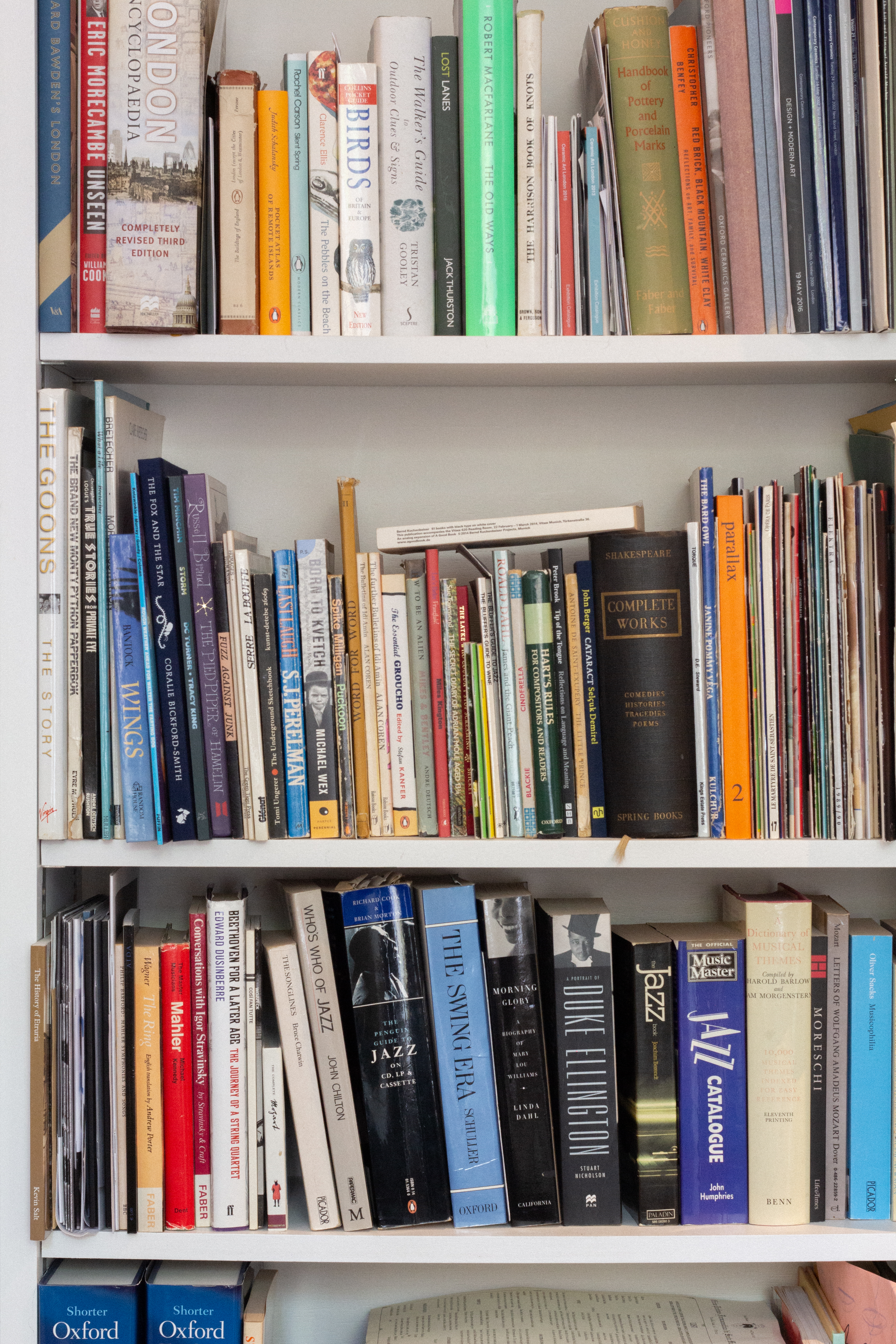
“What I find fascinating about Roden’s books especially ‘The Book of
Jewish Food’ is that they are books about culture. They offer you an insight
into the culture surrounding the food.”
Then at the bottom, there is a motley collection of journals, bits and pieces, extracts etc. moving further around there is photography, art, blending into a mixture of theory, construction, building. There is also a large section on music, particularly jazz. A lot of records I inherited from my father.
Finally, food. French, English, Italian, Portuguese, Spanish, …I’m particularly proud of this section. As I’m Jewish there are a lot of Jewish cookbooks. We picked up ‘A Book of Middle Eastern Food’ by Claudia Roden in a secondhand bookshop, one of her absolute classics. Roden was an Egyptian Jew and grew up in Cairo. What I find fascinating about Roden’s books especially ‘The Book of Jewish Food’ is that they are books about culture. They offer you an insight into the culture surrounding the food.
Where it comes from, when it is made, how it is made, and so on…
Yes, there is some interesting knowledge to be garnered from these books. Sephardic Jews were being persecuted in Spain and Portugal so many fled to the UK, bringing with them a fried fish dish that was often prepared on Fridays for the Sabbath. This ‘pescado frito’ married the potato and we ended up with the classic, fish and chips!
This is a great series by Alan Davidson. He was a diplomat, who then started a publishing company focusing on cooking books. There was a wonderful series on fish. This one’s called ‘North Atlantic Seafood’, but there was another on Mediterranean seafood. It systematically draws every fish - absolutely beautiful. In the Mediterranean version, you get the name of the fish in French, Greek, Italian and Spanish. This one I’ve got is probably the most beautiful, ‘Fish of the Iberian Peninsula’. It is slim format and gives you the names in Spanish, Catalan, Portuguese, and Basque…I remember several years ago, we had a dinner party with several friends of varying nationalities and there was a big argument over what type of fish we were eating. The next day I scanned a page and sent it to them!
Where did you discover this series?
Well, if you are like me, you are always looking for a good place to work. In London, I found the Guildhall’s Business Library’s reading room. I didn’t realise at the time, but it is home to Elizabeth David’s collection of books. I was sitting there one day and realised I was next to a whole bookcase of cookery books, all being sold for a pound! I had to stop myself because I was starting to look greedy!






“This idea about not looking at architecture
in a singular, theoretical way, but rather, through the influences of society
and politics. For me, that book does stand out. I did also read people like
Venturi, but I can’t say it had the same sort of influence, because it did not
connect to society. People like Tafuri were talking about architecture, art,
and culture, but in the context of society!”
Stuffed in the corner are various maps that I have collected over the years. This is a beautiful book, ‘Les Guides Bleus Provence’. Don’t you just love it when a book has a large fold-out map. Another beautiful series worth mentioning are the Nicholson books - beautiful guides to the Thames in a rectangular format that fit comfortably in the hand. The drawings have a real special quality to them.
Then there are novels in a loose alphabetical order. A section on ceramics, humour, games. Poetry and plays. Some of these are David’s. A bit of maths, a bit of science, a lot of which is David’s. A lot of those books are in London.
Could you give a bit of background to how you have divided your library between Oxford and London?
Over the last six years or so, I have spent a lot of time shifting architectural books around as I’m working on things. When we were doing work on the house in Oxford, a significant portion got moved to London. It has just worked out that way. They are broadly organised in both places, but I cannot categorically say to you there is one set of books there, and one set here. It is a mix. Occasionally I have panicked and ended up with a duplicate!
How many books do you think you have?
I don’t know, it definitely could be thousands. We have had this house in Oxford for about 30 years now. At one point, to my horror, I realised we were acquiring about 6-7 books a week. I had to put a brake on it; I am not particularly keen on acquiring a lot of books that I have not read. There has to be a limit.
Throughout your time as an architect, educator, and curator, what books would you say have been most influential for you?
I’m sure it has changed a lot since I started, but there are a series of books from my late teens, through to my architectural education that spring to mind. Manfredo Tafuri’s book, ‘Architecture and Utopia: Design and Capitalist Development’, was important to me. This idea about not looking at architecture in a singular, theoretical way, but rather, through the influences of society and politics. For me, that book does stand out. I did also read people like Venturi, but I can’t say it had the same sort of influence, because it did not connect to society. People like Tafuri were talking about architecture, art, and culture, but in the context of society!
In that sense, for you, it is the context that brings the discussion on art and architecture into real life.
Exactly. Colin Ward was another important reference in that regard.
I watched your Architecture Foundation discussion on 9H, and I know it was slightly touched upon at the time, but for you, was there any book, or journal, that was particularly prevalent to its inception? Not necessarily only in terms of its material, but perhaps also in style?
I am not sure there was. We were entering the era of post-modernism and there was a dearth of theory at the time, but we all had a real hunger. I spent all my spare time working on 9H. For me, it was a huge intellectual investment. 9H really came about from the collaborative nature of those running it. The cohort was very diverse so they would share architecture and knowledge from mainland Europe. In Britain, we would have encountered this knowledge sporadically, but it was very limited. It was this understanding of the relationship between theory and architecture, or thinking and architecture, that was important to us.
Do you think there was a gap in terms of building studies, or a lack of connection to the architectural school of thought in Europe?
It was…patchy. The coverage was accidental, rather than systematic, which led to a lack of critical structure. You could find snapshots in the Architectural Review, and the Architect’s Journal did run a fantastic ‘building studies’ series, but these largely focused on British buildings. This was a huge issue whilst Thatcher was in power, as the only substantial public building on site was the British Library. We wanted to create a broad publication, with real, critical structure.
All the books you have picked out so far seem quite distinct in that they connect architecture to society. Do you feel this lack of structure was a real issue in how these European buildings were being showcased? There was a lack of depth, or insight, into the context of these buildings? A series of buildings, by Siza for example, that were intrinsically of a place, and society, but you wouldn’t be able to read that for lack of depth.
I think so. Even with Siza, he was out in the wilderness until the Revolution. For a long time it was like that. Snozzi was veering towards communism. A lot of these architects were unknown.
Is there any publication since that you feel has had the same weight as 9H? Or is published in the same spirit? Defiant. Disruptive.
I don’t think we thought of 9H as disruptive. It was just what it was. I do enjoy OASE Journal. I like the way it is organised into themes so you get a range of papers on one topic. However, I find it can get quite narrow in its authorship. It is a different time now though. The way journals are made is completely different.
How do you work with books, especially when it comes to writing papers, or teaching?
It is a mixture. Those that go to the office tend to be because I’m designing something and I find a reference that I think might be interesting. When I’m writing, books get pulled off, stacked in piles, and tagged. I grew up in an environment where you didn’t write in books. I have finally succumbed to using a pencil. I occasionally scan pages.

“It is about the sociology of invention, arguing that inventions don’t
just happen because someone has a bright idea, but rather the sociological
conditions have to be right.”
Where are you finding the books you collect?
Various bookshops, although they are shrinking, particularly the secondhand ones. The possibility of finding a gem in a secondhand bookshop is slowly diminishing now. My theory was always to not go to architectural specialists.
If you could re-discover one book, what would you choose?
If by re-discover you mean the books I have spent years salivating over, I wouldn’t mind Geoffrey Jellicoe’s book on Renaissance Gardens. It is fantastic. There are other books that I couldn’t afford to buy when I was younger and I wish I had now. When the Pompidou first opened, they ran a series of amazing exhibitions: Paris, New York, Moscow. The catalogues were fantastic. I wouldn’t mind owning those now.
There are other books that I have read and re-read. These are the books that I am forever giving to people as presents! Primo Levi’s, ‘The Wrench’ is a wonderful book. Levi had such an aptitude for describing physical conditions, architectural conditions. It is very difficult to do that. The other writer who I am constantly returning to is John Berger. His essay, ‘The Moment of Cubism’ has always stuck with me. The beauty of Berger’s writing is that he is also a novelist. There is a narrative to his non-fiction work. This is such a sweet book; a conversation between Berger and his daughter. A lot of his work lingers in my mind. Robin Evans’ piece on the Barcelona Pavilion is equally wonderful. He gave a talk on it at the AA. I remember having a box of slides I’d taken on my desk and studying one image for several minutes before realising I had put the slide in upside down. In that essay, Evans talks about the symmetrical axis of the Barcelona Pavilion being on the horizontal. I guess the slides proved him right! I like rich and direct writing, which is found in Levi, Berger and Evans’ work.
Has there been anything in particular that has been important to your teaching? Books that you recommend to young, aspiring architects?
I do encourage students to read. I would love to see more students move away from the reading list and find sources they are genuinely interested in; to not be led. However, I do encourage them to read Frampton’s book, ‘Studies in Tectonic Culture: The Poetics of Construction in Nineteenth and Twentieth Century Architecture’, because of the way it looks at different kinds of architecture. It unpacks the work, leading students to sources like Semper. I do encourage them to read Robin Evans’ essays. It is no good throwing complete books at students, although I do recommend they read Tanizaki's, ‘In Praise of Shadows’ in its entirety. This is to try and help students position themselves; to try and help them decide why they like something; what they like about it; and why.

When I was teaching technical studies, I used to go into Blackwell’s science section. I came across some fantastic books there; often from Delft, but from the aeronautical department! They produced this incredible book, ‘Of Bicycles, Bakelites, and Bulbs: Towards a Theory of Sociotechnical Change’ by Wiebe Bijker. It is about the sociology of invention, arguing that inventions don’t just happen because someone has a bright idea, but rather the sociological conditions have to be right.
Connected to society…
Exactly. Another book from the same department is Beuker’s, ‘Lightness’, which I often show my students. It covers structures from eggs and airplanes to packaging and monocoques.


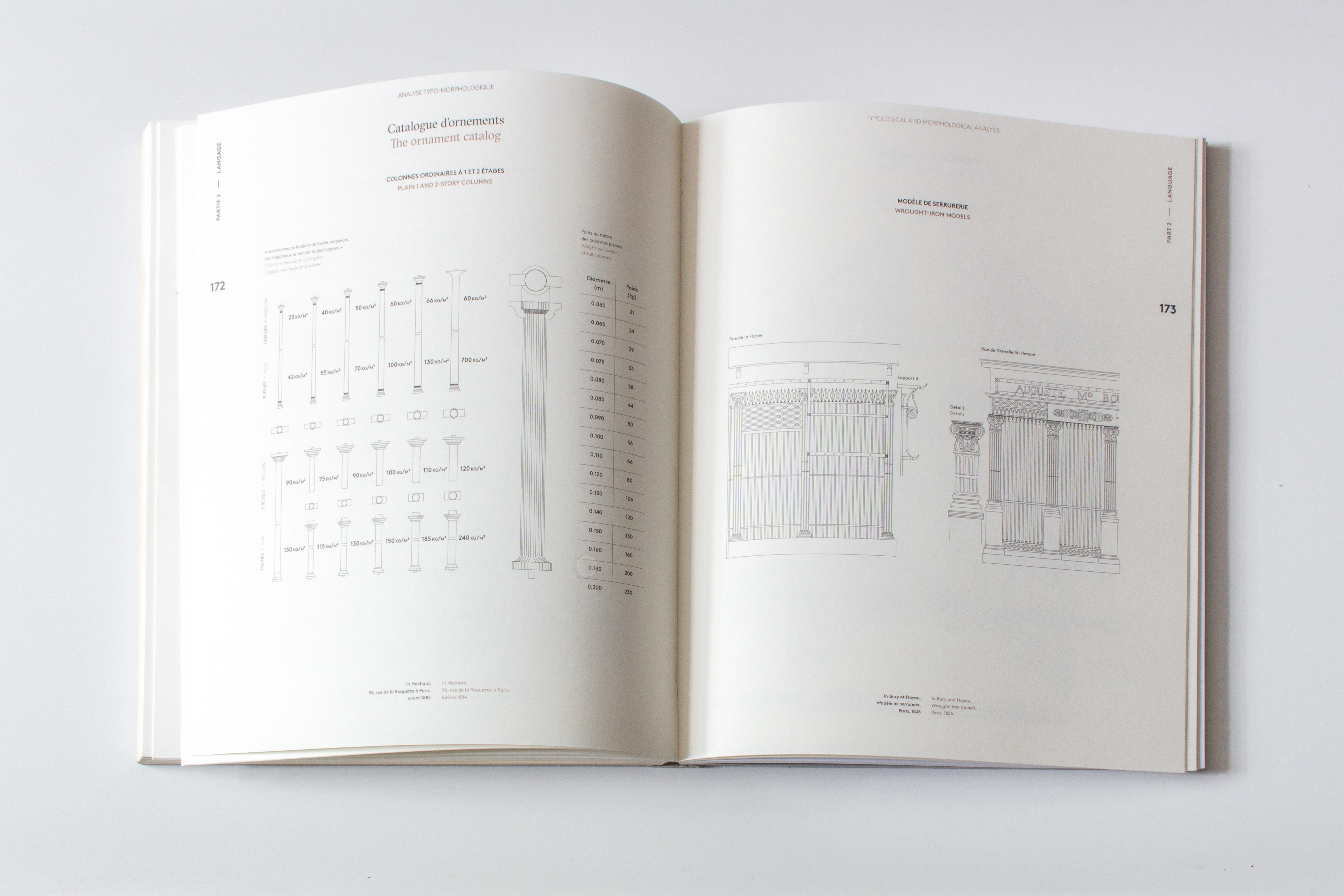






I also show them books like this, ‘Haussman’s Paris’. Its systematic approach is a useful tool for discussion with students. Unfortunately, I didn't make it to the exhibition in the Pavillon de l’Arsenal in Paris.
My taste is very eclectic, but this is quite helpful when you are teaching. Invariably someone is doing a project on knots, or weaving…
Do you find yourself reaching more for books, say on fishing, or boats, than you do for architecture books?
A bit of both. I do end up carrying a lot of books to Nottingham for students as I know they won’t be able to find them in the library. There are other architecture books that have gone out of print, which I know students will struggle to get hold of as well. I will often put a request into the university library for them to buy an out of print book, with questionable success
The other one I pulled out, which is a real oddity, is ‘Count Romford on Fireplaces’. That would be a great technical project. It is an old book telling you the solutions to how you get fireplaces to draw. I’ve worked on projects where there have been issues with old fireplaces, so it felt quite appropriate.
Finally, this is also very interesting, ‘How to be a Fairytale Princess: Phrases for Reading and Memorising for Girls of an Impressionable Age’. What a title! Unfortunately I cannot track the author down. A friend went to an exhibition of graduate work in Oxford and bought it for me. It is like an old fashioned exercise book. I’ve tried really hard to track her down but I can’t.
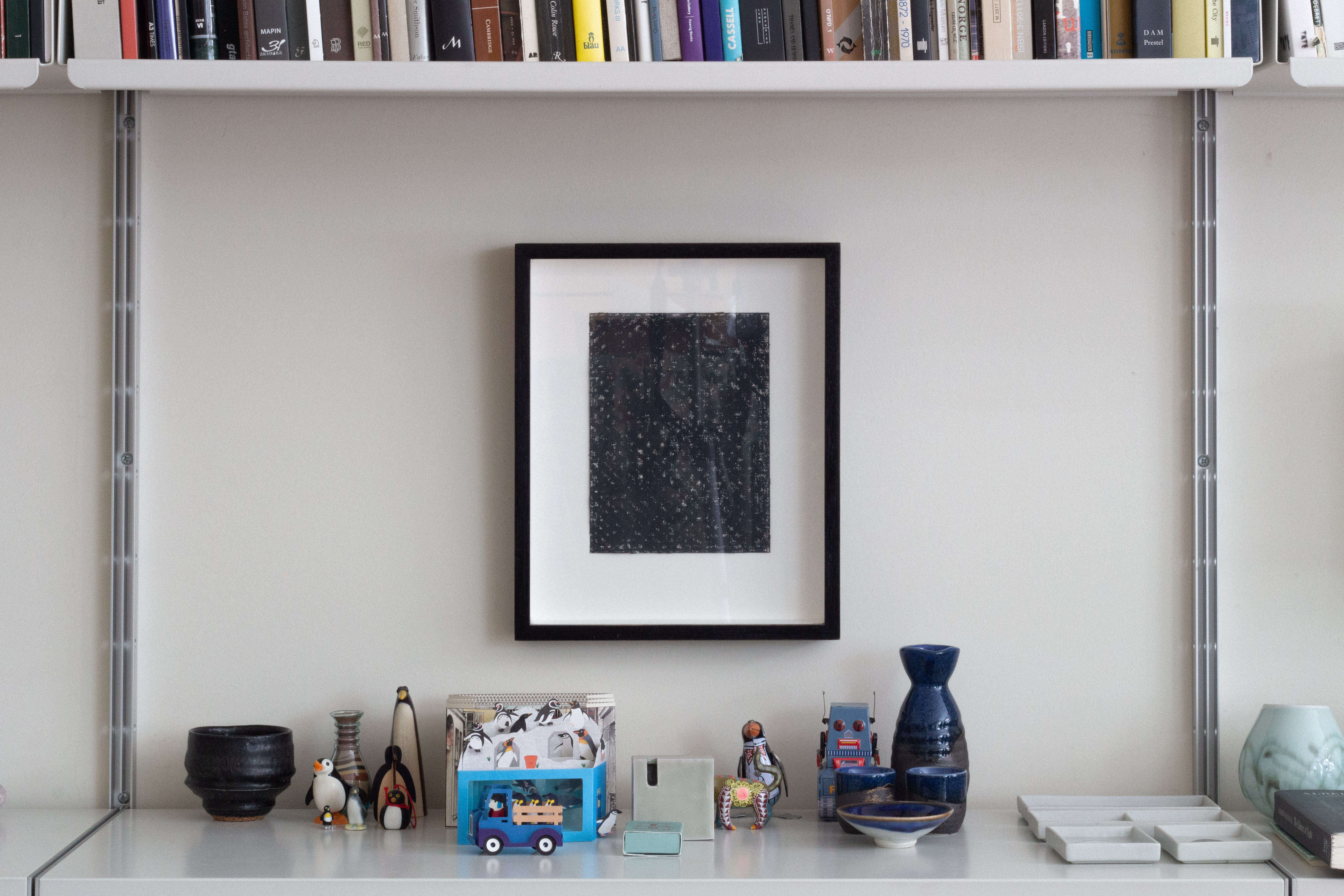
GOLDEN LANE
This is one of the books on fish I was telling you about. A fascinating book which leads into another I wanted to talk to you about, ‘The Futurist Cookbook’. This is the first English translation of Marinetti’s work.
When did that come out?
Oh, I can’t remember now off the top of my head. There it is, 1980. Remarkably, that is the first English translation.







Could you talk us through the library here? How has it formed?
It is definitely not as well organised as Oxford. Architecture and monographs on the lower shelf. Over to the left is theory, smaller architecture books. I’ve pulled out a couple from here to show you. ‘Rasmussen on Cities’ is fantastic. People tend not to know that one as well as the others. It is out of date now, but it is a very curious book.
To the right is a section on artists. Along the top there are books on cities. This is one of my favourites, Jan Morris’s, ‘Trieste and the Meaning of Nowhere’. Of all her books on cities, this one is my favourite. The hardback is beautiful. Trieste is a fascinating city, which only became part of Italy in the 1950’s. Prior to that it was part of Austria. It has changed hands several times so it had a very diverse and accepting population.







Down there are books on food. This is, ‘Food for Thought. Thought for Food: A Reflection on the Creative Universe of Ferran Adrià’; a book Richard Hamilton did with Adrià for a documentary on El Bulli. Graphically, it is fantastic. Interestingly, Adrià recorded every dish he ever cooked; how they served every meal. He also drew every food container in the restaurant. There are graphics at the back explaining them all. There was a big exhibition at Somerset House that showcased this extraordinary collection. I really wish I’d been to the restaurant, it must have been an incredible experience.
And is this the book for the exhibition?
I think it was for the documentary, rather than the exhibition itself because Richard Hamilton was involved in it. All the techniques, the art references…The only thing missing from this is scratch and sniff…
And eat!
A couple of years ago I went to a talk Heston Blumenthal did at the Royal Society of Art. Everyone was given a tiny little sachet and during the talk at one point, he told everyone to open the sachet and have a sniff. What a technique!








This is another book Richard Hamilton was involved in, ‘The Bride Stripped Bare by her Bachelors Even’. The book he did with Duchamp. It includes these amazing drawings. It is his transcription of Duchamp’s work. It is easy to forget that the Tate’s Duchamp collection is made up of reconstructions.
The other book I want to show you is, ‘British Campaign Furniture: Elegance under Canvas 1740-1914’. This amazing genre of folding furniture. It was all from British campaigns, military campaigns. Wild, flat packed designs. It is the origin of all sofa beds and foldaway furniture. There are tables where 18 officers can sit round, and they fold away to not much bigger than a suitcase!
How do you and your partner share books?
I’m definitely responsible for bringing home the majority. But I will select a couple to highlight how our interests crossover. ‘Logicomics’ is great. ‘DNA for Beginners’ is extremely good. The other one is Thomas Kuhn, ‘The Structure of Scientific Revolutions’. This is one of the books I didn’t have to get out of the library when I was doing the masters course at the Bartlett as David already had it. This intriguing concept that ideas are formed out of other ideas - the nature of moving backwards and forwards between the prequels of uncertainty.



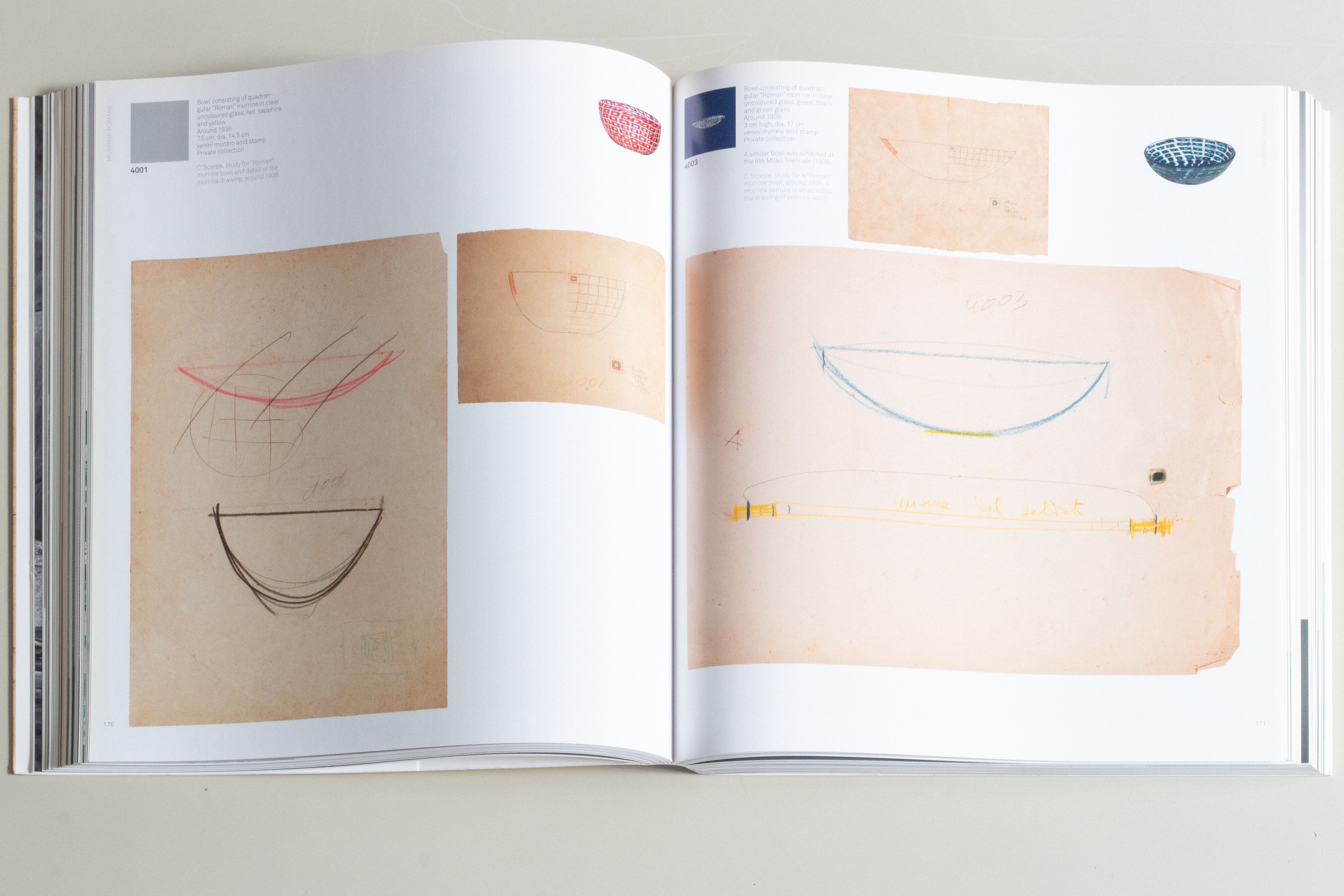



“Some of the pieces are completely opaque through a resurrected
ancient technique, it was amazing! I was not the only one who left the Biennale
that year expressing how it was the best exhibition.”
There are other overlaps in our interests too, particularly exhibitions. This is the catalogue for an exhibition on Carlo Scarpa’s glassware that we went to in Venice. A beautiful collection. It explains all the techniques he used and shows sectional drawings, as well as photographs. I brought the catalogue back with me as I didn’t want to risk not being able to buy online. It definitely wasn’t light to travel with.
Could you buy the glassware as well?
Oh no! It was all historic. Some of the pieces are completely opaque through a resurrected ancient technique, it was amazing! I was not the only one who left the Biennale that year expressing how it was the best exhibition.
We also overlap on the travel books.
And is this a mixture of travel guides, books on travelling, books on cities…
Yes, a bit of everything. Another book on Italy, ‘Historic Shops and Cafes of Turin’. The entire city is arcaded and there are some fantastic shops and shopfronts, so the city decided to record them all. If there is a group of books on a particular city, it will either be one that I am particularly interested in, or one that I have taken a group of students to.
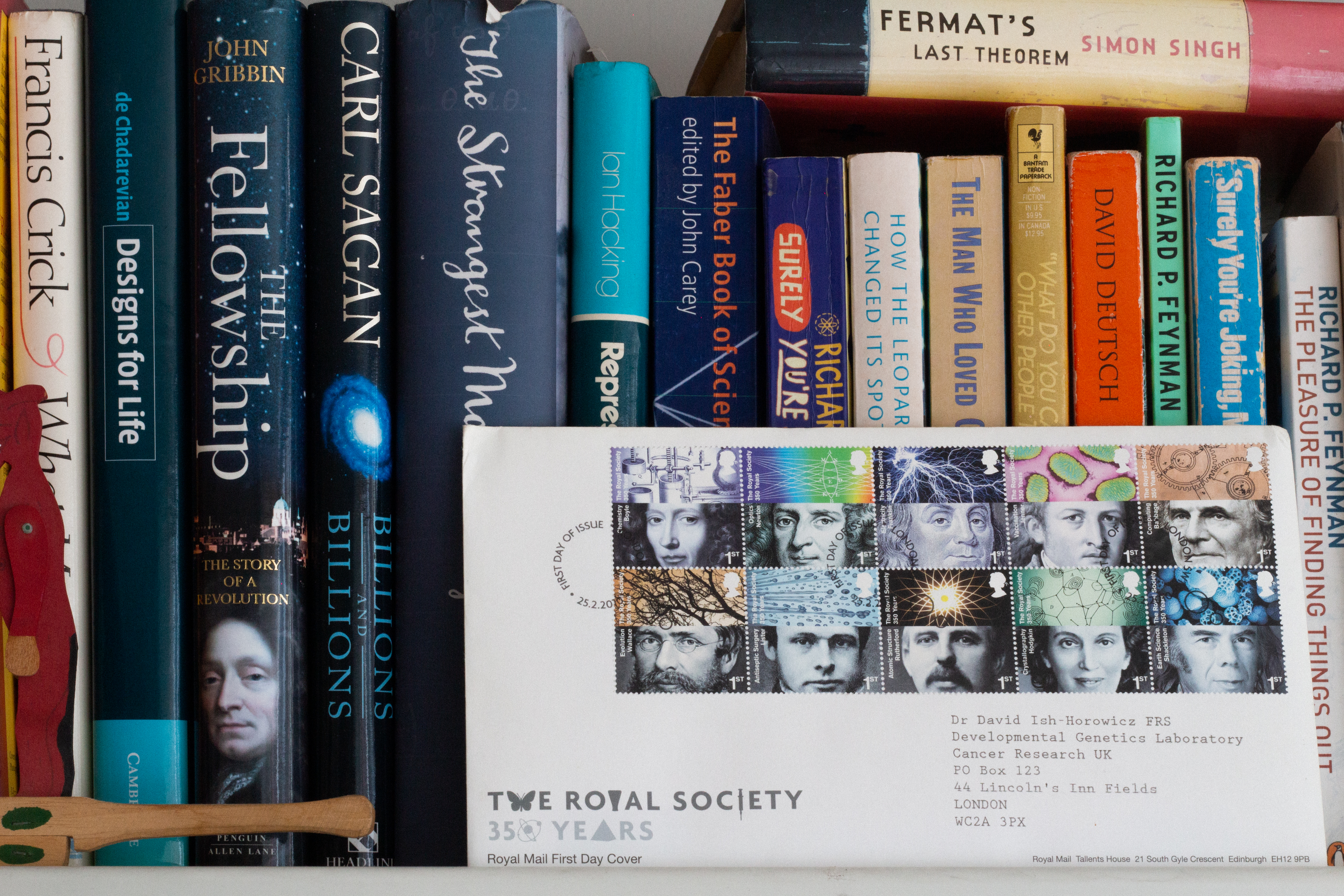
This is David’s. When the post office did a commemoration for 350 years of The Royal Society, they sent this to every fellow. As David is one, he got sent this envelope with every stamp on it. The other reference to the Post Office is this amusing card from our family collection. This is my Father’s handwriting. Such a different time - imagine an era where the post office celebrates modernist, brutalist architecture. Look at the price! 9 pence! It is amazing.
These are also incredible. Hand-painted flick books of buildings such as the Eames House. I can’t quite remember where I picked them up, it might have been the AA Bookshop. How long did it take someone to do that?! The Eames Office being constructed; a very Eamesien product.
It is interesting how many architecture students must have seen that video!
Exactly, and they’re still being shown it! It is testament to their incredible work.
All photography by Tim Lucas unless otherwise stated.
Website
